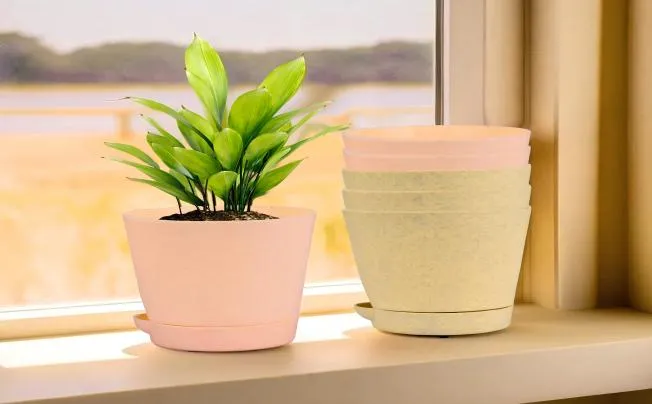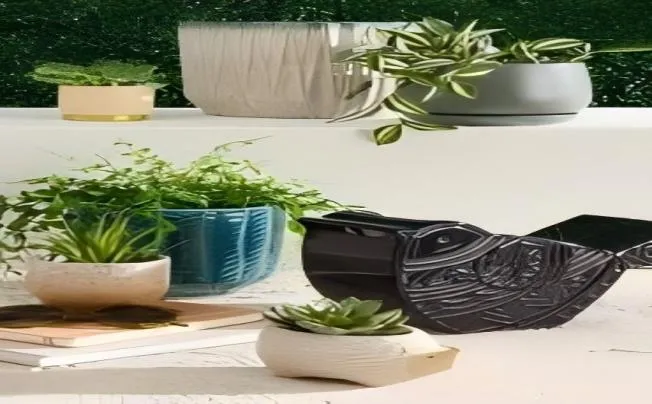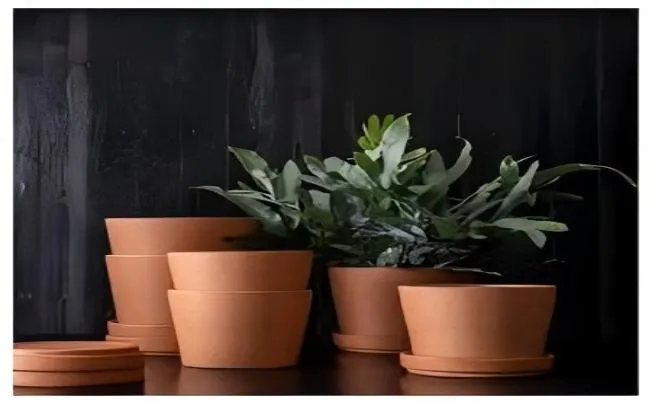Do Steel Planters Rust?
In the natural environment, steel rusting is a highly regular occurrence. Rust is likely to occur in steel flower pots as long as they are in an oxygenated and wet environment.
Effects of rust on flower pots and plants
Effect on the actual flowerpot
Rust is a loose, porous material that will eventually erode the flowerpot's metal framework from a structural perspective. The flowerpot's wall thickness will progressively thin as rust forms and builds up, and its stability and strength will also deteriorate. Rust can make the once strong and long-lasting flowerpot brittle, making it prone to cracking or breaking.
Rust significantly reduces the typical lifespan of steel flowerpots from a service life standpoint. If a high-quality steel flowerpot is rust-free for five to ten years, it might not be usable in two to three years. This results in resource waste in addition to consumers having to replace flowerpots more frequently, which raises expenses.
Rust has a significant negative impact on the flowerpot's appearance as well. New steel flowerpots typically have a metallic sheen and a sleek, simple design that can give the plants a distinctive texture, but once they rust, the surface will be covered in ugly rust stains and the colour will become drab.
Impact on plant growth
Rust does contain iron, which is one of the trace elements necessary for plant growth. To a certain degree, rust can help plants grow and develop regularly by giving them iron nourishment.
However, a high concentration of rust or direct exposure to a lot of rust may hinder the growth of the plant. The pH of the soil is impacted by rust. In the soil, rust will go through a number of chemical processes that could make the soil more acidic. Changes in soil pH may make it difficult for certain plants, which prefer an alkaline or neutral soil environment, to absorb nutrients as they should, which can lead to poor growth, including leaf drooping and yellowing.
The air permeability of the soil may also be impacted by the presence of rust. Rust buildup will narrow the spaces between soil particles, which will hinder the free passage of water and air through the soil. This will have an impact on plant roots' ability to breathe and on the uptake of nutrients and water. Similar to a human mouth, the root system of a plant must breathe and absorb nutrition. The root system will experience "difficulty breathing" and be unable to supply the plant with the materials it needs for proper growth if the soil is not breathable, which will ultimately impede plant growth.

How to judge whether a steel flower pot is rusted?
1. Examining appearance
Examine the flower pot's surface closely. Reddish-brown patches are most likely the first stage of rust. At initially, these rust spots might be dispersed. They will eventually disperse and join into fragments to create a layer of rust as time passes and the degree of rust develops. Because ferric oxide, the primary component of rust, has these colour properties, rust is typically reddish-brown, brown, or orange-red in hue.
Additionally, the kinds of rust vary. Some can be tiny dots, while others might show up as sheets that blanket the flower pot's surface in big chunks. Additionally, the rust on the flower pot is not evenly distributed. In general, areas that are frequently rained on and the sides and bottoms of flower pots—areas that are readily exposed to oxygen and moisture—will rust more severely.
2. The sense of touch
The flower pot may be rusted if you feel a significant roughness when you touch its surface with your hand and it is not as smooth as a brand-new flower pot. Due to its loose and porous nature, rust will cause the flower pot's surface to become less flat, giving it a gritty feel. When you touch something with significant rust, it might feel gritty, or even rust powder might come off and adhere to your fingertips. This is a result of the rust becoming extremely loose and unable to be securely fastened to the flower pot's surface. A little outside force will cause it to fall off.

How to delay rusting of flower pots?
1. Examining appearance
Examine the flower pot's surface closely. Reddish-brown patches are most likely the first stage of rust. At initially, these rust spots might be dispersed. They will eventually disperse and join into fragments to create a layer of rust as time passes and the degree of rust develops. Because ferric oxide, the primary component of rust, has these colour properties, rust is typically reddish-brown, brown, or orange-red in hue.
Additionally, the kinds of rust vary. Some can be tiny dots, while others might show up as sheets that blanket the flower pot's surface in big chunks. Additionally, the rust on the flower pot is not evenly distributed. In general, areas that are frequently rained on and the sides and bottoms of flower pots—areas that are readily exposed to oxygen and moisture—will rust more severely.
2. The sense of touch
The flower pot may be rusted if you feel a significant roughness when you touch its surface with your hand and it is not as smooth as a brand-new flower pot. Due to its loose and porous nature, rust will cause the flower pot's surface to become less flat, giving it a gritty feel. When you touch something with significant rust, it might feel gritty, or even rust powder might come off and adhere to your fingertips. This is a result of the rust becoming extremely loose and unable to be securely fastened to the flower pot's surface. A little outside force will cause it to fall off.

Selected Blogs
-
What customization services are available for metalworking customization?
2024-12-12
-
What Is The Difference Between A Plant Container And A Raised Bed?
2024-04-23
-
Garden Screening & Fence Panels
2024-04-23
-
Gardening pot selection tips
2024-04-17
-
The function and collocation of horticultural fire pot
2024-04-17


